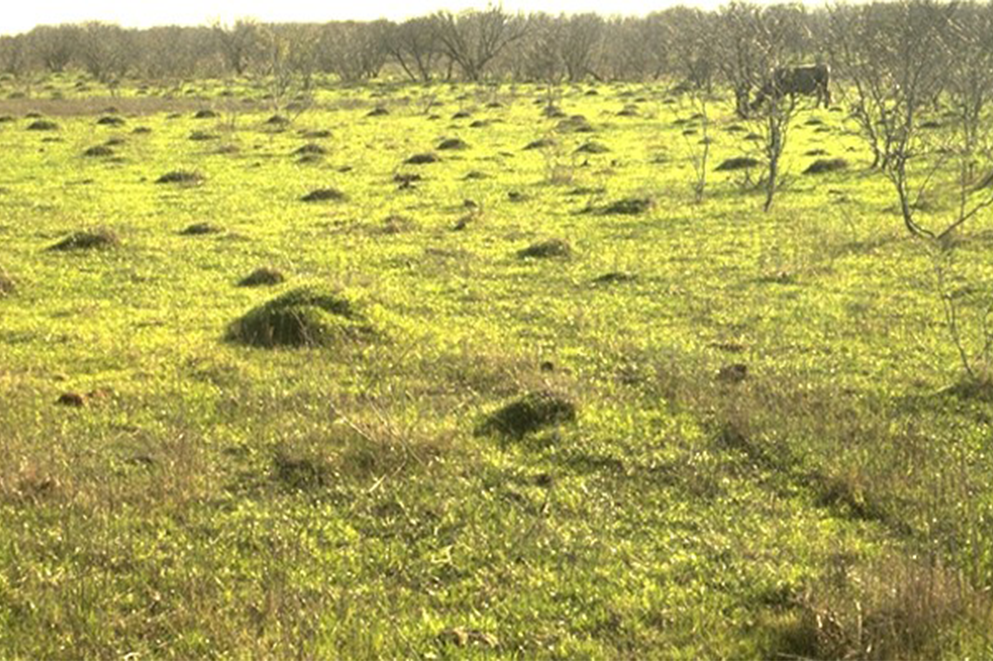
The Hidden Dangers of Fire Ant Mounds
It’s well-known that fire ants are incredibly invasive and can cause painful stings to both humans and animals. But a lesser known danger, especially on the economic side, is the extensive damage fire ant mounds can cause. From undermining turf to disturbing soil and impacting expensive equipment, fire ant mounds can cause almost as much damage as the ants themselves.
The Destructive Impact of Fire Ant Mounds
Fire ants burrow beneath grass, disrupting root systems that can result in dry, brown patches. Their tunneling activities impact soil aeration and structure, making it harder for plants to thrive. They can feed on plant buds, fruit, and stems, reducing crop yield and overall plant health. Due to these impacted root systems, mounds often disrupt grazing areas for pastures, damage root systems, and contribute to soil erosion, impacting forage quality.
Large mounds can also damage mower blades and other large agricultural equipment, as they often develop unseen in tall grasses. For agricultural operations, irrigation interference can be a major concern as well. Fire ants often nest around pipes and valves, leading to costly irrigation system damage. Mounds in fields can snag blades and damage machinery, while fire ants may infest electrical components, leading to costly repairs. Fire ants often nest in electrical boxes, damaging wiring and equipment.
How to Identify Fire Ant Mounds
- Dome-shaped mounds, often reaching up to a foot in height.
- Found in open, sunny areas such as pastures, crop fields, and lawns.
- Fire ants swarm aggressively when their nest is disturbed.
- Other signs include displaced soil near water pipes, electrical boxes, and expansion joints.
Don’t wait for fire ants and their mounds to take over. Take action now with Extinguish® Plus.
For more information on fire ants and how to control them, follow us on Facebook – Extinguish Fire Ants, and on X, @ExtinguishCLS.